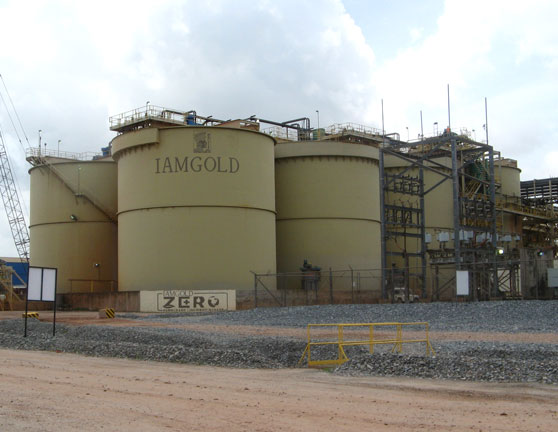Early last month Iamgold (IMG-T, IAG-N) declared that it wanted to cut annual spending by $100 million through a combination of cost-cutting initiatives aimed at reducing mine operating costs, exploration expenditures and administrative costs.
President and chief executive Steve Letwin noted in March that the company’s share price performance was “unacceptable” and that management was “determined to intensify” its return on capital and “improve our operating performance.” (At the end of 2012, Iamgold held more than $1 billion in cash and gold bullion.)
Letwin pointed out that improving operating efficiency and containing costs were ongoing priorities, which would help counter the pressure from cost inflation and an increasing amount of hard rock at the Rosebel mine in northeastern Suriname and at its Essakane gold mine in Burkina Faso. The higher proportion of hard rock increases the demand for power to grind and crush ore.
Iamgold has come a step closer to its larger cost-cutting goals with the announcement today that the government of Suriname has approved cheaper power rates and access to new concessions for the company’s Rosebel mine, about 85 km south of the capital city of Paramaribo.
Until now, Iamgold has paid 19¢ per kilowatt hour for its power in the former Dutch colony situated in northern South America bordering the Atlantic Ocean between French Guiana and Guyana. Under the new agreement, the mid-tier gold producer will pay just 11¢ per kilowatt hour, which will bring more gold resources into economic viability, the company says.
In addition, under the terms of a new joint-venture partnership between Iamgold (70%) and Suriname (30%), the partners will be allowed to convert an additional 20,000 hectares or 200 sq km to new rights of exploitation within the joint-venture area for processing at Rosebel. This could extend Rosebel’s mine life and gives Iamgold the chance to find softer ore that can be processed more cheaply. (Currently the mine life at Rosebel is estimated at 19 years.)
Under the agreement, Iamgold also maintains all of its existing entitlements in the Rosebel operations and in the Gross Rosebel exploitation concessions, and extends the terms of its existing mineral agreement by fifteen years to 2042. Its mining concession covers 170 sq km with the Suriname River to the east, the Saramacca River to the west and the Brokopondo reserve to the south.
And if the results of a feasibility study are positive on whether to expand the gold mill’s throughput capacity from 12 million tonnes per year to 14 million tonnes per year, the government can also participate in the expansion project. If the government decides not to participate, Iamgold is free to do it on its own.
David Haughton of BMO Nesbitt Burns estimates Rosebel makes up about 28% of the company’s net present value at spot prices and a 10% discount rate. He has a US$8.50 a share target price on the stock, which closed in New York at $5.21 per share within a 52-week range of $5.00-16.88.
“The lower power cost…is a substantial improvement … and supports the transition to hard rock material in 2013,” Haughton wrote in a brief note. “The access to new concessions, through a new joint venture … provides the opportunity to increase the life of the mine and to find softer ore with access to an additional 20,000 hectares to new rights of exploitation within their joint-venture.”
“The combination of the new Suriname government agreement and the recently announced US$100 million cost saving in 2013 has the potential to improve the company’s cost base and valuation,” he continued, adding that Iamgold trades at 0.6 times estimated NPV using spot prices and a 10% rate, or at “a significant discount to the senior producer average of 1.4 times.”


Be the first to comment on "Suriname approves new agreement with Iamgold"